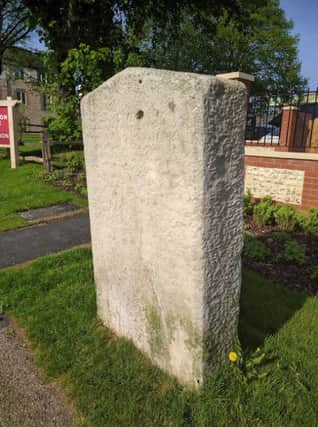The dark history of Chichester's Smugglers' Stone


It’s located down Broyle Road, close to Roussillon Park. You may have even walked past it without realising what it is.
It’s got a dark and fascinating history - the Smugglers’ Stone was erected in 1749 to record the execution of seven smugglers, and it marks the place where three of them (Jackson, Mills senior and Mills junior) were hung.
Advertisement
Hide AdAdvertisement
Hide AdIn the 1740s, a notorious group of smugglers known as the Hawkshurst Gang terrorised the South Coast.
Contraband owned by the Hawkhurst Gang and other Chichester smugglers was seized in 1747, and was taken to Poole Customs House for safe-keeping.
A group of thirty smugglers from Chichester joined forces with seven members of the Hawkhurst Gang to ride to Poole and reclaim the goods.
As there was no resistance put up at the Customs House, the smugglers were able to carry away two tons of tea.
Advertisement
Hide AdAdvertisement
Hide AdAfter stopping for breakfast at Fordingbridge in Hampshire, they dispersed the goods throughout the southern counties.
There was a long search for the smugglers, and eventually, one of them was apprehended in 1748.
The Poole Customs House Officer, William Galley, and another witness to the crime, a shoemaker named Daniel Chater from Fordingbridge, were called to give evidence at his trial near Stansted in West Sussex. On their way to the trial, the men were intercepted at Rowlands Castle by the other members of the smuggling gang. Both William Galley and Daniel Chater were tortued and brutally murdered.
The public were shocked by the barbarity of their deaths, and when the gang were finally caught they were brought to trial at a special Court held in Chichester’s Guidhall.
Advertisement
Hide AdAdvertisement
Hide AdSeven members of the smuggling gang were tried and sentenced to hang the following day at their trial, which took place on January 16, 1749.
As a warning to other smugglers, their bodies were placed at various sites around the major routes to Chichester and the stone was put up at the Broyle, where it now stands.
The stone, which is now no longer legible, says that Richard Mills, one of the smugglers, died in his prison cell the night before he was executed: “he thereby escaped the punishment which the heinousness of his complicated crimes deserved, and which was the next day most justly inflicted upon his accomplices.
“As a memorial to posterity and a warning to this and succeeding generations this stone is erected AD1749.”
Advertisement
Hide AdAdvertisement
Hide AdDon’t miss out on all the latest breaking news where you live.
Here are four ways you can be sure you’ll be amongst the first to know what’s going on.
1) Make our website your homepage
2) Like our Facebook page
3) Follow us on Twitter
4) Register with us by clicking on ‘sign in’ (top right corner). You can then receive our daily newsletter AND add your point of view to stories that you read here.
And do share with your family and friends - so they don’t miss out!
Always the first with your local news.
Be part of it.